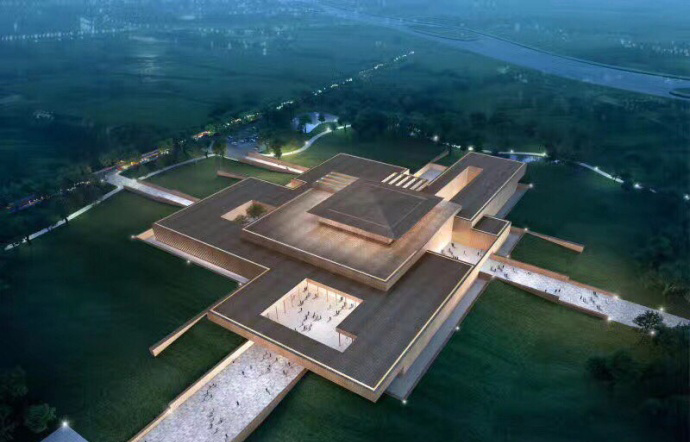Museum, theme park to preserve Erlitou culture

Design sketch of the Erlitou Site Museum
Because they existed in prehistory, it’s often hard to distinguish among the Xia, Shang and Zhou dynasties. The discovery of oracle bones and the excavation of the Yin Ruins in Anyang, Henan Province, provided evidence for the existence of the Shang, but the historicity of the Xia was difficult to verify until the excavation at Erlitou.
“The Erlitou site has offered reliable material evidence to identify the Xia Dynasty. Chinese scholars wouldn’t have put forward the timeline of the Xia, Shang and Zhou dynasties without it. The prevailing view in academia is that Erlitou was a capital city of the middle and late Xia dynasty,” said Li Boqian, chief scientist of the Xia-Shang-Zhou Chronology Project and a professor from Peking University.
“The Erlitou site is crucial for us to explore China’s earliest dynastic civilizations Xia and Shang as well as their time boundary. Presently, only 1 percent of the total 3 million-square-meter site has been excavated,” said Chen Xingcan, director of the Institute of Archaeology at the Chinese Academy of Social Sciences. The chronology of the site remains a mystery due to a lack of written records from that time.
“We have backfilled all the excavated area to preserve the site, so now it looks no different from a piece of farmland,” said Zhao Haitao, deputy director of the Erlitou fieldwork team. The current protective facilities do not match Erlitou’s historical value. Most relics were stored in a warehouse and the workplace for research and repair is simple and crude. Given the circumstances, an Erlitou Site Museum is badly needed, Zhao said.
Construction began in June, 2017 on the Erlitou Site Museum, a major cultural project under China’s 13th Five-Year Plan. It will display a collection of nearly 40,000 relics and ruins unearthed over six decades of excavation as well as written and visual materials from two projects that explore the origins of Chinese civilization.
In addition, construction has begun on an archeology theme park. It will cover an area of about 410,000 square meters and give visitors a glimpse at the ancient city, such as the walls of palatial town, the large-scale building foundations, road network as well as workshop sites for casting bronze and turquoise.
Gu Yucai, deputy director of State Administration of Cultural Heritage, said that the museum and park will allow the relics of the Yiluo Plain and the documents about the Xia Dynasty to “come alive.” They will help to improve public understanding of Chinese history, promote cultural influence and boost national confidence.
The article was abridged and translated from People’s Daily.
